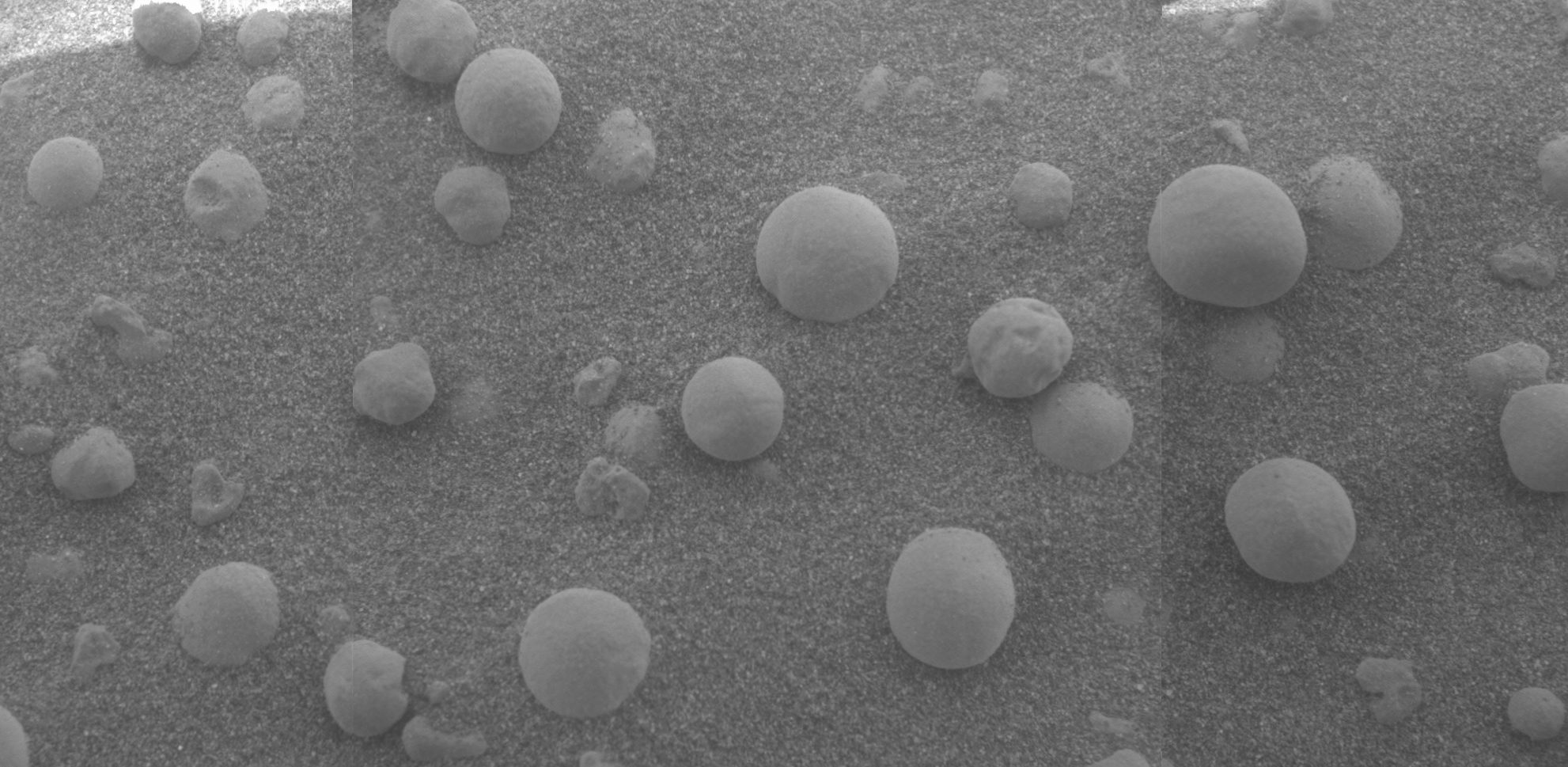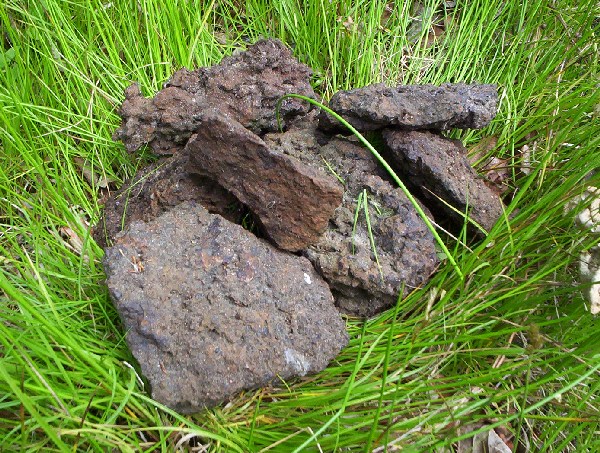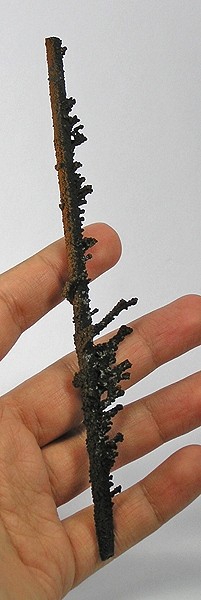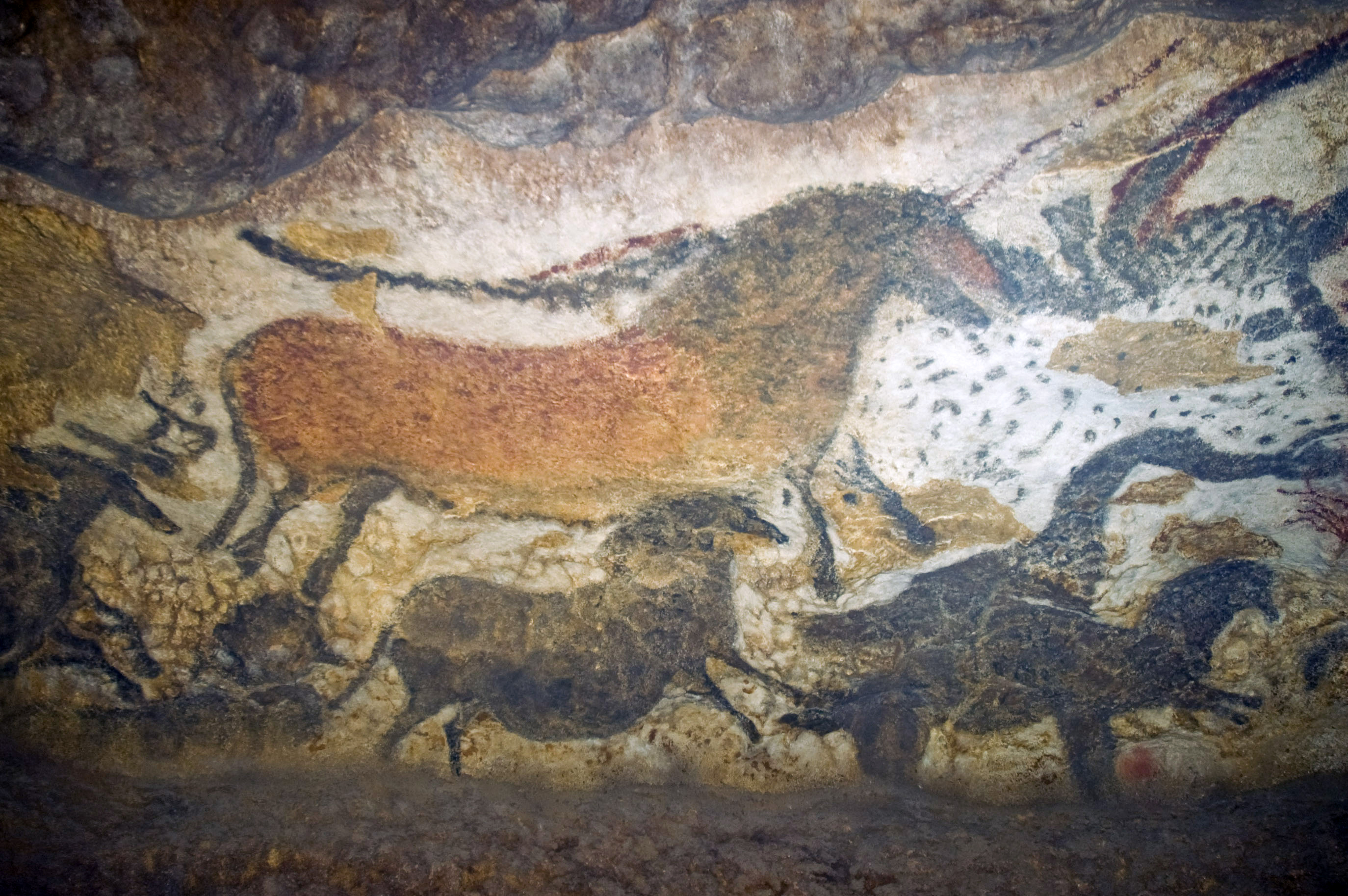|
Ochre
Ochre ( ; , ), iron ochre, or ocher in American English, is a natural clay earth pigment, a mixture of ferric oxide and varying amounts of clay and sand. It ranges in colour from yellow to deep orange or brown. It is also the name of the colours produced by this pigment, especially a light brownish-yellow. A variant of ochre containing a large amount of hematite, or dehydrated iron oxide, has a reddish tint known as red ochre (or, in some dialects, ruddle). The word ochre also describes clays coloured with iron oxide derived during the extraction of tin and copper. Earth pigments Ochre is a family of earth pigments, which includes yellow ochre, red ochre, purple ochre, sienna, and umber. The major ingredient of all the ochres is iron(III) oxide-hydroxide, known as limonite, which gives them a yellow colour. A range of other minerals may also be included in the mixture:Krivovichev V. G. Mineralogical glossary. Scientific editor :uk:Булах Андрій Глібович, A. G ... [...More Info...] [...Related Items...] OR: [Wikipedia] [Google] [Baidu] |
Blombos Cave
Blombos Cave is an archaeological site located in Blombos Private Nature Reserve, about 300 km east of Cape Town on the Southern Cape coastline, South Africa. The cave contains Middle Stone Age (MSA) deposits currently dated at between c. 100,000 and 70,000 years Before Present (BP), and a Late Stone Age sequence dated at between 2000 and 300 years BP.Tribolo, C., et al. (2006) TL dating of burnt lithics from Blombos Cave (South Africa): further evidence for the antiquity of modern human behaviour. Archaeometry, 48, 341–357.Jacobs, Z., et al. (2006) Extending the chronology of deposits at Blombos Cave, South Africa, back to 140 ka using optical dating of single and multiple grains of quartz. Journal of Human Evolution, 51, 255–73.Henshilwood, Christopher S., et al. (2011) A 100,000-Year-Old Ochre-Processing Workshop at Blombos Cave, South Africa. Science, 334, 219–222, .Jacobs, Zenobia, et al. (2013) An improved OSL chronology for the Still Bay layers at Blombos Cave, ... [...More Info...] [...Related Items...] OR: [Wikipedia] [Google] [Baidu] |
Roussillon, Vaucluse
Roussillon (; ) is a Communes of France, commune in the Vaucluse Departments of France, department of the Provence-Alpes-Côte d'Azur Regions of France, region in Southeastern France. It is a member of Les Plus Beaux Villages de France (The Most Beautiful Villages of France) Association. Roussillon lies within the borders of the Natural Regional Park of Luberon. In the French natural regional parks system, new economic activities may be developed only if they are sustainable. It is noted for its large ochre deposits found in the clay surrounding the village. Ochres are pigments ranging from yellow and orange to red. One of the former ochre quarries can be visited via the "Sentier des Ocres" (Ochre Path), a walk of either 30 or 60 minutes through the old workings. Geography The village stands on an ochre ridge, situated in a broad valley with the "Monts du Vaucluse" to the north and the "Petit" Luberon to the south. The nearest railway station is in Cavaillon; the nearest TGV stat ... [...More Info...] [...Related Items...] OR: [Wikipedia] [Google] [Baidu] |
Sienna
Sienna () is an earth pigment containing iron oxide and manganese oxide. In its natural state, it is yellowish brown, and it is called raw sienna. When heated, it becomes a reddish brown, and it is called burnt sienna.''Shorter Oxford English Dictionary'', 5th Edition (2002) It takes its name from the city-state of Siena, where it was produced during the Renaissance. Along with ochre and umber, it was one of the first pigments to be used by humans, and is found in many cave paintings. Since the Renaissance, it has been one of the brown pigments most widely used by artists. The first recorded use of ''sienna'' as a color name in English was in 1760. The normalized color coordinates for sienna are identical to kobe, first recorded as a color name in English in 1924. Earth colors Like the other earth colors, such as yellow ochre and umber, sienna is a clay which is partially composed of iron oxides. In the case of sienna, the most prevalent iron oxides are limonite (which in i ... [...More Info...] [...Related Items...] OR: [Wikipedia] [Google] [Baidu] |
Hematite
Hematite (), also spelled as haematite, is a common iron oxide compound with the formula, Fe2O3 and is widely found in rocks and soils. Hematite crystals belong to the rhombohedral lattice system which is designated the alpha polymorph of . It has the same crystal structure as corundum () and ilmenite (). With this it forms a complete solid solution at temperatures above . Hematite occurs naturally in black to steel or silver-gray, brown to reddish-brown, or red colors. It is mined as an important ore mineral of iron. It is electrically conductive. Hematite varieties include ''kidney ore'', ''martite'' ( pseudomorphs after magnetite), ''iron rose'' and ''specularite'' ( specular hematite). While these forms vary, they all have a rust-red streak. Hematite is not only harder than pure iron, but also much more brittle. The term ''kidney ore'' may be broadly used to describe botryoidal, mammillary, or reniform hematite. Maghemite is a polymorph of hematite (γ-) with the ... [...More Info...] [...Related Items...] OR: [Wikipedia] [Google] [Baidu] |
Paleolithic
The Paleolithic or Palaeolithic ( years ago) ( ), also called the Old Stone Age (), is a period in human prehistory that is distinguished by the original development of stone tools, and which represents almost the entire period of human prehistoric technology. It extends from the earliest known use of stone tools by Hominini, hominins, 3.3 million years ago, to the end of the Pleistocene, 11,650 Before Present#Radiocarbon calibration, cal Before Present, BP. The Paleolithic Age in Europe preceded the Mesolithic Age, although the date of the transition varies geographically by several thousand years. During the Paleolithic Age, hominins grouped together in small societies such as band society, bands and subsisted by gathering plants, fishing, and hunting or scavenging wild animals. The Paleolithic Age is characterized by the use of Knapping, knapped stone tools, although at the time humans also used wood and bone tools. Other organic commodities were adapted for ... [...More Info...] [...Related Items...] OR: [Wikipedia] [Google] [Baidu] |
Clay Earth Pigment
Earth pigments are naturally occurring minerals that have been used since prehistoric times as pigments. Among the primary types of earth pigments include the reddish-brown ochres, siennas, and umbers, which contain various amounts of iron oxides and manganese oxides. p. 30 Other earth pigments include the green earth pigments or , blue earth pigments such as vivianite-based "blue ochre", white earth pigments such as chalk, and black earth pigments such as charcoal. Earth pigments are known for their fast drying time in oil painting, relative inexpensiveness, and lightfastness. Cave paintings done in sienna still survive today. Production After mining, the mineral used for making a pigment is ground to a very fine powder (if not already in the form of clay), washed to remove water-soluble components, dried, and ground again to powder. For some pigments, notably sienna and umber, the color can be deepened by heating (calcination) in a process known as "burning", although it do ... [...More Info...] [...Related Items...] OR: [Wikipedia] [Google] [Baidu] |
Le Moustier
Le Moustier is an archeological site consisting of two rock shelters in Peyzac-le-Moustier, a village in the Dordogne, France. It is known for a complete skeleton of the species ''Homo neanderthalensis'' that was discovered in 1908. The Mousterian tool culture is named after Le Moustier, which was first excavated from 1863 by the Englishman Henry Christy and the Frenchman Édouard Lartet. In 1979, Le Moustier was inscribed on the UNESCO World Heritage List along with other nearby archeological sites as part of the '' Prehistoric Sites and Decorated Caves of the Vézère Valley''. Skeleton The skeleton known as "Le Moustier" is estimated to be approximately 45,000 years old. The characteristics of its skull include a large nasal cavity and a somewhat less developed brow ridge and occipital bun, as might be expected in a juvenile. After discovery, the skull was dismantled, cast and reconstructed at least four times. During this process, the skull received considerable amoun ... [...More Info...] [...Related Items...] OR: [Wikipedia] [Google] [Baidu] |
Limonite
Limonite () is an iron ore consisting of a mixture of hydrated iron(III) oxide-hydroxides in varying composition. The generic formula is frequently written as , although this is not entirely accurate as the ratio of oxide to hydroxide can vary quite widely. Limonite is one of the three principal iron ores, the others being hematite and magnetite, and has been mining, mined for the production of iron since at least 400 BC. Names Limonite is named for the Ancient Greek word ( ), meaning "wet meadow", or ( ), meaning "marshy lake", as an allusion to its occurrence as in meadows and marshes. In its brown form, it is sometimes called brown hematite or brown iron ore. Characteristics Limonite is relatively density, dense with a specific gravity varying from 2.7 to 4.3.Northrop, Stuart A. (1959) "Limonite" ''Minerals of New Mexico'' (revised edition) University of New Mexico Press, Albuquerque, New Mexico, pp. 329–333, It is usually medium to dark yellowish brown in color. T ... [...More Info...] [...Related Items...] OR: [Wikipedia] [Google] [Baidu] |
Neanderthal
Neanderthals ( ; ''Homo neanderthalensis'' or sometimes ''H. sapiens neanderthalensis'') are an extinction, extinct group of archaic humans who inhabited Europe and Western and Central Asia during the Middle Pleistocene, Middle to Late Pleistocene. Neanderthal extinction occurred roughly 40,000 years ago with the immigration of modern humans (Cro-Magnons), but Neanderthals in Gibraltar may have persisted for thousands of years longer. The first recognised Neanderthal fossil, Neanderthal 1, was discovered in 1856 in the Neander Valley, Germany. At first, Neanderthal 1 was considered to be one of the racial hierarchy, lower races in accord with historical race concepts. As more fossils were discovered through the early 20th century, Neanderthals became characterised most especially by Marcellin Boule as a unique species of underdeveloped human. By the mid-20th century, human evolution was described as progressing from an apelike ancestor, through a "Neanderthal phase", ending ... [...More Info...] [...Related Items...] OR: [Wikipedia] [Google] [Baidu] |
Goethite
Goethite (, ) is a mineral of the diaspore group, consisting of iron(III) oxide-hydroxide, specifically the α- polymorph. It is found in soil and other low-temperature environments such as sediment. Goethite has been well known since ancient times for its use as a pigment (brown ochre). Evidence has been found of its use in paint pigment samples taken from the caves of Lascaux in France. It was first described in 1806 based on samples found in the Hollertszug Mine in Herdorf, Germany. The mineral was named after the German polymath and poet Johann Wolfgang von Goethe (1749–1832). Composition Goethite is an iron oxyhydroxide containing ferric iron. It is the main component of rust and bog iron ore. Goethite's hardness ranges from 5.0 to 5.5 on the Mohs Scale, and its specific gravity varies from 3.3 to 4.3. The mineral forms prismatic needle-like crystals ("needle ironstone") but is more typically massive. Feroxyhyte and lepidocrocite are both polymorphs of ... [...More Info...] [...Related Items...] OR: [Wikipedia] [Google] [Baidu] |
Umber
Umber is a natural earth pigment consisting of iron oxide and manganese oxide; it has a brownish color that can vary among shades of yellow, red, and green. Umber is considered one of the oldest pigments known to humans, first used in the Ajanta Caves from 200 BC to 600 AD. Umber's advantages are its highly versatile color, warm tone, and quick drying abilities. While some sources indicate that umber's name comes from its geographic origin in Umbria, other scholars suggest that it derives from the Latin word ''umbra'', which means "shadow". The belief that its name derives from the word for shadow is fitting, as the color helps create shadows. The color is primarily produced in Cyprus. Umber is typically mined from Open-pit mining, open pits or Mining, underground mines and ground into a fine powder that is washed to remove impurities. In the 20th century, the rise of synthetic dyes decreased the demand for natural pigments such as umber. History The earliest documente ... [...More Info...] [...Related Items...] OR: [Wikipedia] [Google] [Baidu] |
Middle Paleolithic
The Middle Paleolithic (or Middle Palaeolithic) is the second subdivision of the Paleolithic or Old Stone Age as it is understood in Europe, Africa and Asia. The term Middle Stone Age is used as an equivalent or a synonym for the Middle Paleolithic in African archeology. The Middle Paleolithic broadly spanned from 300,000 to 50,000 years ago. There are considerable dating differences between regions. The Middle Paleolithic was succeeded by the Upper Paleolithic subdivision which first began between 50,000 and 40,000 years ago. Pettit and White date the Early Middle Paleolithic in Great Britain to about 325,000 to 180,000 years ago (late Marine Isotope Stage 9 to late Marine Isotope Stage 7), and the Late Middle Paleolithic as about 60,000 to 35,000 years ago. The Middle Paleolithic was in the geological Chibanian (Middle Pleistocene) and Late Pleistocene ages. According to the theory of the recent African origin of modern humans, anatomically modern humans began migrat ... [...More Info...] [...Related Items...] OR: [Wikipedia] [Google] [Baidu] |








